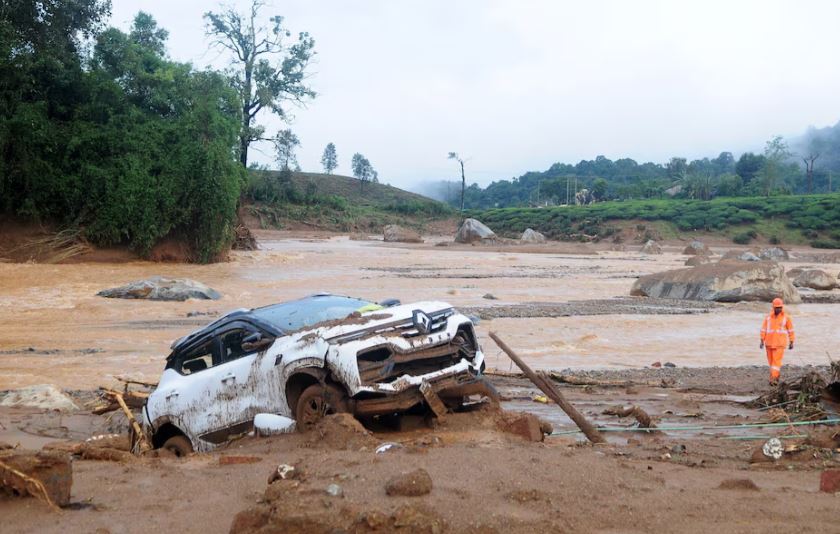The recent landslides in Kerala’s Wayanad district, which claimed hundreds of lives and displaced countless others, have exposed the deep-rooted socioeconomic disparities and environmental vulnerabilities plaguing India. This catastrophic event serves as a grim reminder of the urgent need for sustainable development and equitable resource management.
Historical Roots of Environmental Exploitation: The Wayanad tragedy is not an isolated incident but a consequence of historical patterns of exploitation. During the British colonial era, the focus on resource extraction, particularly timber for military and construction needs, and commercial agriculture led to the displacement of indigenous communities and the degradation of natural ecosystems. This legacy continues to haunt India, as evidenced by the ongoing conflicts between development and environmental protection. The colonial-era policies disrupted traditional land management practices and marginalized local communities, creating a fertile ground for environmental disasters.
Unsustainable Development: A Recipe for Disaster: The relentless pursuit of economic growth at the expense of environmental sustainability has created a precarious situation in many parts of India. In Wayanad, the conversion of forests into tea plantations and the construction of buildings on fragile slopes have contributed to soil erosion, landslides, and flooding. This unsustainable development model not only jeopardizes the lives and livelihoods of local communities but also threatens the region’s ecological balance. The lack of comprehensive environmental impact assessments and the disregard for ecological carrying capacity have exacerbated the risks associated with development projects.
The Human Cost of Environmental Degradation: The Wayanad disaster highlights the disproportionate impact of environmental degradation on marginalized communities. The victims of the landslides were primarily tea plantation workers and their families, who were forced to live in vulnerable areas due to economic constraints. This tragedy underscores the need for inclusive development strategies that prioritize the well-being of all citizens, regardless of their socioeconomic status. The government must ensure that development projects do not exacerbate existing inequalities and that vulnerable communities are not disproportionately affected by environmental disasters.
The Way Forward: Sustainable Development and Environmental Justice: The Wayanad tragedy serves as a wake-up call for India to re-evaluate its development paradigm. The Western Ghats Ecology Expert Panel (WGEEP) report, which emphasizes the importance of balancing economic growth with environmental protection, provides a valuable roadmap for sustainable development. The report’s recommendations for regulating land use, promoting eco-friendly practices, and empowering local communities must be implemented with urgency. Embracing sustainable practices, such as agroforestry, rainwater harvesting, and renewable energy, can help mitigate the adverse effects of climate change and protect vulnerable ecosystems.
Conclusion: A Call for Action: The Wayanad disaster is a stark reminder that India’s pursuit of development must be grounded in environmental sustainability and social justice. The government, civil society, and the private sector must work together to create a more equitable and resilient society, where the needs of both people and the planet are met. The time for action is now, before more lives are lost and more ecosystems are destroyed. This requires a paradigm shift in policymaking, prioritizing long-term sustainability over short-term gains, and ensuring that environmental protection is not seen as an impediment to development but as an integral part of it.

Sunil Garnayak is an expert in Indian news with extensive knowledge of the nation’s political, social, and economic landscape and international relations. With years of experience in journalism, Sunil delivers in-depth analysis and accurate reporting that keeps readers informed about the latest developments in India. His commitment to factual accuracy and nuanced storytelling ensures that his articles provide valuable insights into the country’s most pressing issues.



